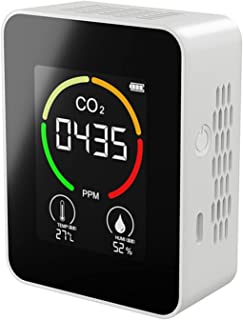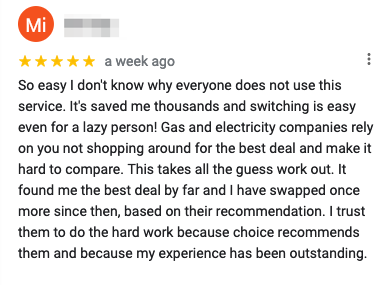Energy Coach - July
It's here - we're in the middle of winter, and most of us are feeling the chill, as well as the pain of high energy bills. Here's our roundup of what you can do to shrink your bills while keeping your home's comfort levels high.
Winter is here, and energy prices are high. Here are our top tips to save energy and money this winter.

It's real now. Winter has arrived, and hopefully, some of your Energy Coach preparations are already in play. We're going to need every trick in the book because it really will be a 'winter of discontent' for energy consumers — even though wholesale prices have come off the boil, electricity and gas retail prices remain at historic highs.
But let’s not panic. Energy Coach is here to help. This Winter 2023 edition of the Energy Coach newsletter provides simple, free, and cost-effective ways to help you save energy, minimise waste and face the colder winter months in comfort, without breaking the bank.
Remember that, Energy Coach’s partner Bill Hero will help ensure that your winter energy bills will stay as low as possible, whatever your usage. If you’re not already a Bill Hero subscriber, there is no better time to join than now.

Not a subscriber yet? What are you waiting for? Your savings are guaranteed! Bill Hero automatically compares every bill to help keep you always on the best-priced plan.
It costs nothing to save on energy bills in winter. Here's everything you need to know to save energy and money this winter, without spending a cent.
Don't immediately crank up the heating; try wearing warmer clothes!
Each additional degree of heating can add between 5% and 10% to your energy use, which will land in your bills.
It costs a lot to heat your home, so why heat the areas you're not using? Shut the doors and only heat the rooms you're using to save energy and money.
Remember to regularly clean your heaters, including the filters, fan blades or vents, so they perform at their best.
Don't heat an empty home. Turn off your heaters at bedtime and when you're out of the house.
Many appliances will draw stand-by 'ghost' power even when they are switched off. This can add up to 3% of your total energy costs. Turn off your appliances at the power point when you're not using them
Warm air rises to the ceiling — and beyond, unless you have good insulation. That's why you can feel that cold breeze around your ankles.
If your ceiling fan has a reversing switch, use it when your heater is running. It will help re-circulate the warmed air back into the room and improve efficiency.
There may be less sunshine in winter, but you can still use it to your advantage, even if you don't have solar panels.
Open your blinds and curtains when the sun is shining, to get some warmth into your home, and close them before it gets dark.
Make the most of whatever sunshine there is to air-dry your clothes. It's 100% free, while your clothes dryer if you have one, is one of the greediest appliances in your home.
If you don’t have an outdoor clothesline, you can still put clothes racks out in the sun and fresh air. Or you can rack-dry clothes indoors.
Heating water is expensive, so don't overheat it. If you routinely need to mix with cold water to make it usable, then your hot water system is set too high, and you're wasting energy and money while risking getting scalded.
Overly hot tap water is a frequent cause of serious scalding. At 68°C, it takes only one second to cause a full-thickness scald. At 50°C degrees, it will take five minutes.
If you have a storage hot water system, then the water in the tank needs to stay at a minimum of 60°C to prevent nasty bacteria like Legionella from developing. It will lose heat via the pipes, and you want a delivery temperature of around 50°C at the tap.
Plumbing regulations in Australia require a maximum delivery temperature of 50°C for residential premises. This is plenty hot enough for a bath or shower, but will not cause severe scalding.
Hot water accounts for more than 20% of your household energy use. It's expensive to use the shower as a way to warm yourself up. Keep your showers short and put on more layers instead.
Free is all well and good, but sometimes cost-effective is better. Here's where to focus your Winter energy efficiency spending to get the best results for the least expense.
Draught-proofing is one of the cheapest and most effective ways to keep your home warm and your heating bills down. Draught blockers and gap sealers are very cheap and easy to install and can save up to 25% on your heating bills.
The basic idea is simply to seal any gaps that allow airflow in and out of your home. Whenever you feel a cold draught, track down the source, and seal the gap.
It's common to find gaps around your windows and doors, skirting boards and architraves, and fitted cupboards. It's ridiculously easy to seal most kinds of gaps - see our Energy Coach article Close the Door on Draughts, for some simple how-to help and product advice.
Exhaust fans, by definition, are a source of airflow. You need a draught-stopping shutter for your exhaust fan to close when it's not in use.

Up to 40% of your home heating energy escapes through your windows.
Once you've sealed any cracks and gaps to eliminate actual air movement around the edges of your windows and frames, the next step is to maximise insulation to minimise the heat transfer through the glass itself
Decent thermal curtains or blinds can make a big difference to your home’s thermal efficiency. A curtain creates a layer of still air between your room and the window, which acts as an insulator. Thicker fabrics will generally perform better, and some curtains will have thermal linings to maximise efficiency.
A pelmet, or fitted box structure, at the top of your curtains, will further help minimise air movement behind the curtain, improving efficiency.
Probably the simplest and most cost-effective way to improve the thermal efficiency of the glass itself is to use plain old bubble wrap — make sure you get the kind with big bubbles.
It may not look very stylish, and you might not want to do this on your feature windows, or where there's an actual view to enjoy, but for your non-feature windows, bubble wrap will drastically improve thermal efficiency while still allowing plenty of (diffused) light in.
Alaska Granny knows a thing or two about cost-effective winter insulation
With only a little more effort, you can achieve more aesthetically pleasing results by adding thermal film or secondary glass panels to existing windows, which can significantly improve thermal efficiency for much less than the price of double glazing.
If you use it properly, a programmable thermostat will save you money. Set your internal heating thermostat to keep the temperature between 18°C and 20°C, and automatically turn off the heating at night and when you're out of your home.
Every degree you increase your heating can add up to 10% to your energy use, so keep the thermostat below 20°C and wear an extra layer.
A water-efficient showerhead is one of the most cost-effective ways to save water use. They are also quite easy to install.
Properly installed roof and ceiling insulation will save you 45% or more on your heating costs by reducing your home’s winter heat loss by 25 to 35%.
Insulation is a bigger investment, but it's hugely important. Get an insulation professional to provide expert advice on the right kinds of insulation for your home and climate. It's important to install insulation that meets Australian standards.

As the colder weather closes in, many households will simultaneously fire up their gas heaters and reduce ventilation by closing off internal doors to keep the heat in. This is great for warmth, but can introduce danger.
This increases the potential for exposure to carbon monoxide (CO) from poorly maintained or faulty gas heaters.
Carbon monoxide is an odourless, colourless and poisonous gas, so you will not even notice if your heater releases it in your home.
CO poisoning can cause various symptoms, such as headaches, nausea and vomiting, flushing, muscle pain, weakness, shortness of breath, dizziness, coordination difficulties, confusion, or chest pain.
Any gas heater can become faulty; you should have yours serviced and tested at least once every two years by a licensed or registered gasfitter with an endorsement to service Type A gas appliances.
Every gas-heated home should also have a CO monitor. These are readily available and inexpensive.
Don't wait — get yours right now:

Carbon Monoxide is an odourless, colourless gas that can kill you. Get protected.

Do you hate winter too? Have your say in the comments, but please first read and understand our Community Guidelines.

Savings as a Service is the blog site and newsletter from Bill Hero. Subscribe now and get your energy savings tips and information delivered fresh to your inbox every month.